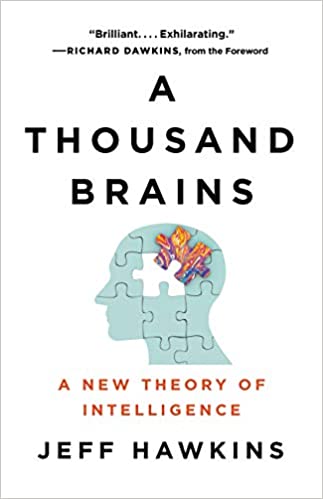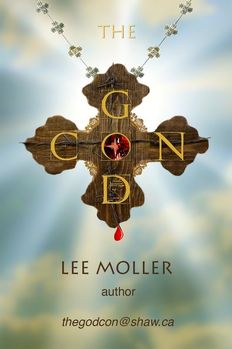 The following paragraph was written prior to my reading the book. I have not changed it subsequent to reading it. I could not wait to get my hands on this book. It attempts to shed light on one of the most profound of questions: Why are we so smart? In other words, how does our brain perform its minor miracles… how does intelligence work? How do we think? How can we glance at a just hit baseball, turn away from it and start running, and then turn back to it to catch the ball right where we thought it would be? How does the brain manage a hurricane of sensory inputs and not go nuts. That is the easy stuff. How can we write a sentence like this… that is a bit trickier. I wonder about illusions like the Necker cube and how it flits back and forth between two possible interpretations. We shall see… This book comes with three sections. The first discusses our brain and a new framework for understanding it. The second describes machine intelligence and where it might go. And the third speaks about the very long range future of the human race. The first section is the best. The third borders on science fiction. The author has been doing brain research for many years, He started the Palm computing company. In trying to understand the brain, he and his fellow researchers write software simulations on how they think the brain actually functions. As a result, many of the analogies and metaphors used are familiar to me as a programmer. I too have spent much pondering some of the questions they deal with, albeit without the requisite understanding of current brain research need to confirm or deny my musings. The book focuses on the neocortex. All mammals have them, but ours is the largest. Stretched out flat, it is about the size of a large tea towel, and only a few millimeters thick. Under a microscope, the neocortex looks the same everywhere. This implies a lot. The neocortex does many things ("sees" vision, interprets sounds, "feels" our bodies, composes sonnets etc), but it does them all with the same architecture of neurons. Or, in other words, it contains a single construct that is used over and over to solve every problem. Another basic premise introduced by the book is "movement". Almost all our understanding involves "moving" (i.e.: moving your eyes allows vision to construct a three dimensional model of our environment; moving a finger can tell us if the ball we are holding is a cue ball or a golf ball; and moving our attention from one view of the world to another allows us to test hypotheses). Another premise is "prediction", the idea being that predicting what will happen next is critical to thinking and surviving. The unit, used everywhere in the neocortex, is the Cortical Column. A column is about a millimeter square, and 2.5 millimeters deep, all the way through the neocortex. There are about 150,000 cortical columns, stacked side by side, in your neocortex. Knowledge is stored in the connections between neurons. Pattern matching is a big part of our thinking processes. The big discoveries of his work are: The neocortex learns a predictive model of the world; predictions occur via potentials inside neurons; and that the secret of the cortical column is Reference Frames. Reference Frames (RFs) are like maps. The brain creates them, and expands on them all of the time. RFs are attached to objects and ideas. If you pick up a cricket ball for the first time, you will immediately create a new RF attached to it, and you will start to populate that RF with information about cricket balls. That RF will include connections to other RFs. Some RFs are temporary, like what you had for breakfast 3 days ago, and others are elaborate, such as the RF that represents your home's interior. This makes perfect sense to me as a programmer. An RF is the brain's basic thinking unit. RFs are associated with cortical columns. One column can contain many RFs. All knowledge is stored relative to RFs. RFs are used to model everything. Inherent in the models is the idea of movement and location. Thinking is a form of movement through RFs. Recursion, a common feature of software, is inherent in RFs. Recursion is the idea of self-similarity. A twig is very similar to a branch which contains many twigs. A branch which contains many twigs, is very similar to a tree limb. A tree limb, which has many branches, is very similar to a tree. That is recursion. It is a classic way of breaking a problem down into smaller pieces. To twist an old philosophical question/answer: What is our brain? It is a collection of RFs that contain other RFs. What are RFs made of? It is RFs all the way down. Neurons get information from other neurons. As these connections are made, a neuron's electrical potential grows until a threshold is reached and it fires. The author describes neuron potentials as a kind of voting system. What if you have two RFs that are quite different, but both equally explain the picture you are looking at (i.e.: the vote is a tie), like the Necker Cube? You can only see the cube using one RF or the other. We can switch back and forth at will. But we cannot see it as both at the same time. I found this portion of the book very exciting to read, especially as a software developer. It is the sort of thing I would have loved to work on, but when I left school we were still talking about sorting algorithms, and a meg of memory cost 10 million adjusted dollars. The second section of the book is about machine intelligence. I will not say too much about this. The major conclusions are these: We have a primitive old part of our brain. It handles things like breathing and walking, and is the source of our basic drives: hunger, sex etc. There is no reason to create a old brain in order to create an intelligent computer. It will be possible, perhaps in near future (30 years?), to create a self-aware, intelligent machine. Self-awareness, it is argued, is just our perception of our attentions over time. Scientists like Hawking feared the intelligent machine. Jeff Hawkins argues that we have little to fear since these machines would lack our more primitive drives. In other words, an intelligent machine would not care about its own survival, at least not like we do. Skynet is unlikely, and we can build in safeties as we go along. The idea of uploading a human intelligence into a computer is largely dismissed. Our brains are built around a body and the old brain. It is not clear that a human intelligence could function without them. In other words, they might be able to upload your intelligence, but you probably would not like the result. If it can be done without destroying the original brain, interesting questions arise, like who is the real you? The idea of linking a human brain to a computer is considerably more likely to come to fruition. This is a very active area of research. The final section discusses the much bigger question of humanities ultimate future. We cannot last forever as a species. What will we, and what can we, leave behind? Hawkin's answer is "Our knowledge". This section is very speculative, but I think the basic premise is correct… namely we are (or were) what we know. If we want to last forever, we should find away to make out knowledge last forever. (Here, "forever" means for a very long time, like billions of years… not literally forever.) This is the most insightful popular book on the human brain written to date. We are our brains. It is helpful to know how it (i.e.: you) works. I cannot recommend it enough. It is very thought provoking. In fact, I think I whipped up a few dozen new RFs just now, scribbling about it. The book has a forward by Richard Dawkins that is just as effusive. Most of my thoughts (see the preamble paragraph above) were addressed. While not mentioned in the book, it seems to me that the idea of RFs is at the core of humor. The best jokes lead you towards one RF, only to provide a new piece of data (we call this the punch line) that snaps you to another RF in a surprising, unpredicted, and hopefully amusing, way.
0 Comments
Leave a Reply. |
AuthorLee Moller is a life-long skeptic and atheist and the author of The God Con. Archives
May 2024
Categories
All
|

 RSS Feed
RSS Feed